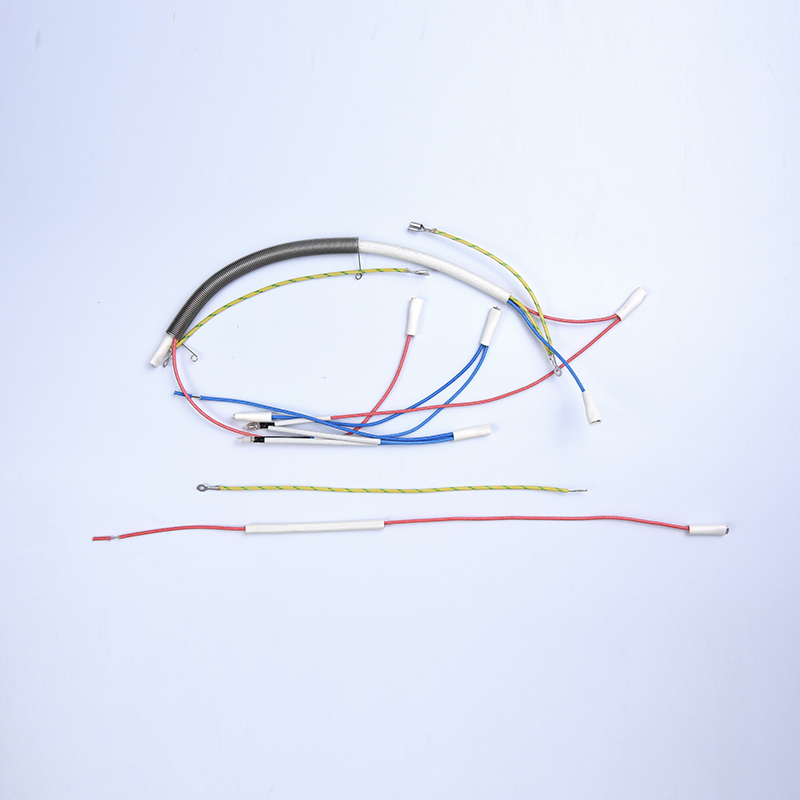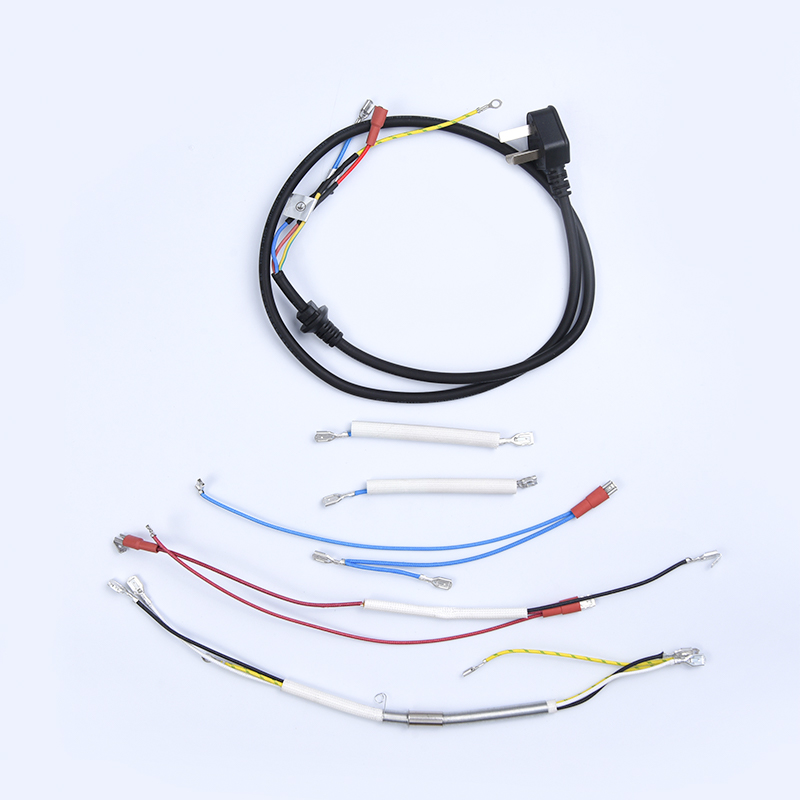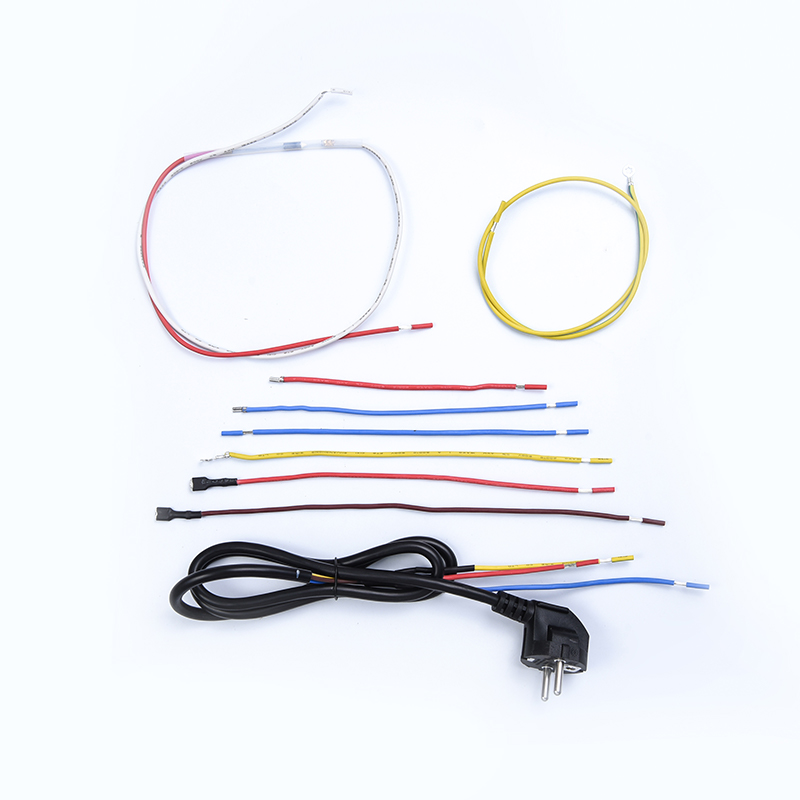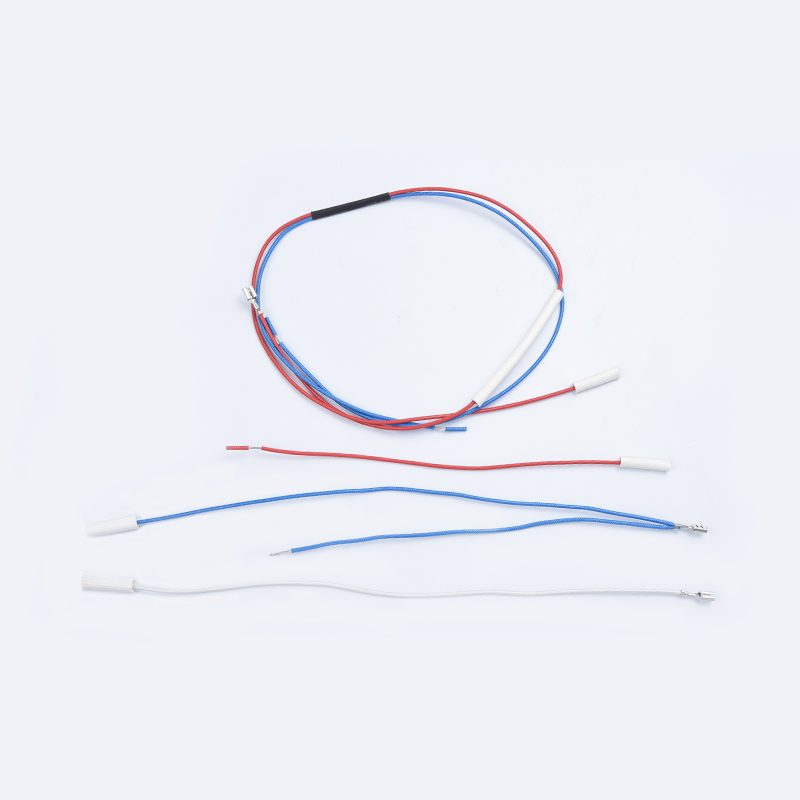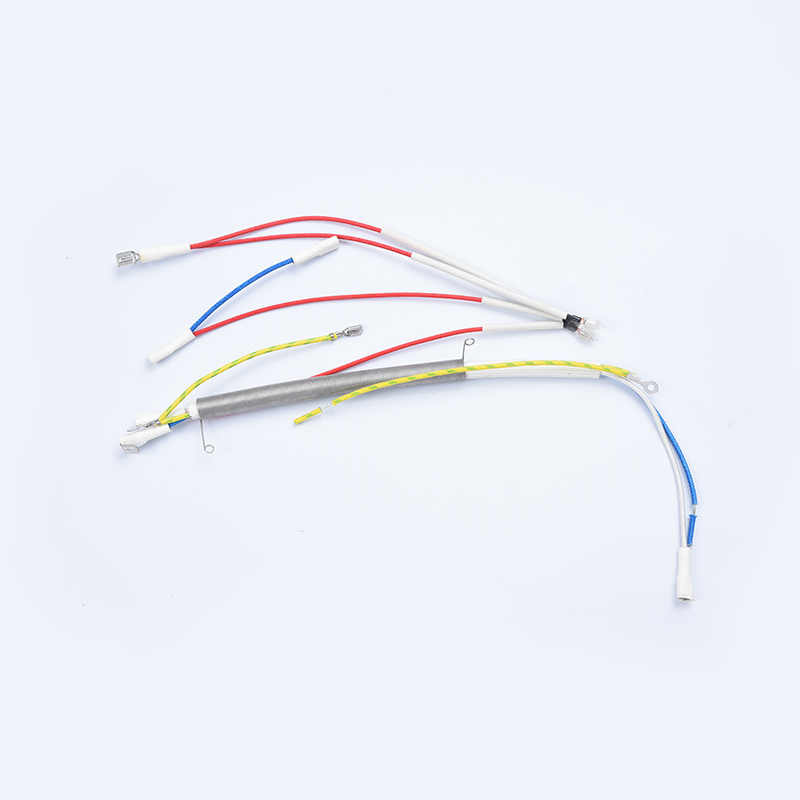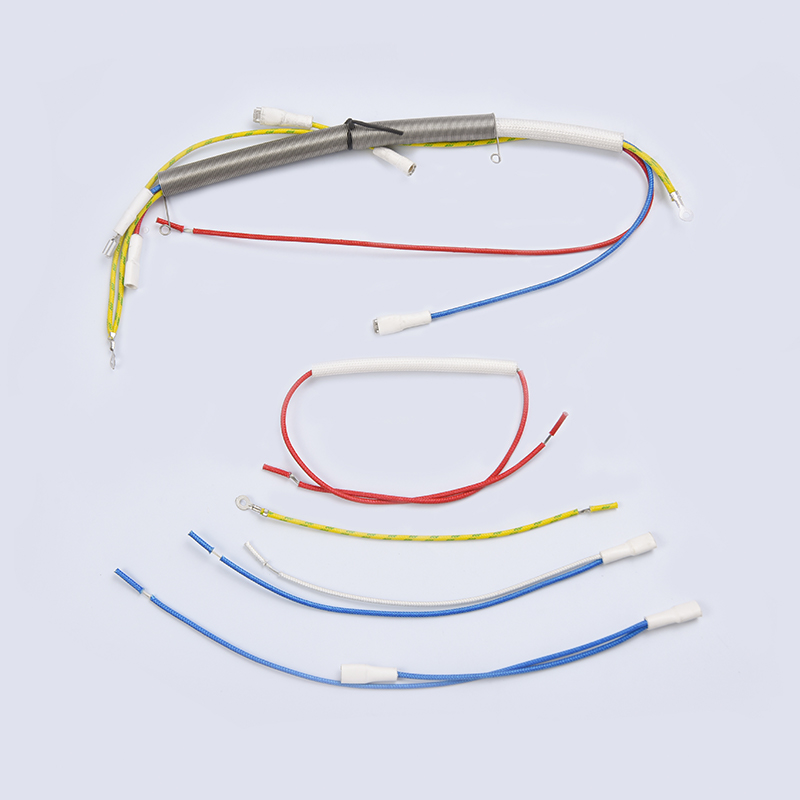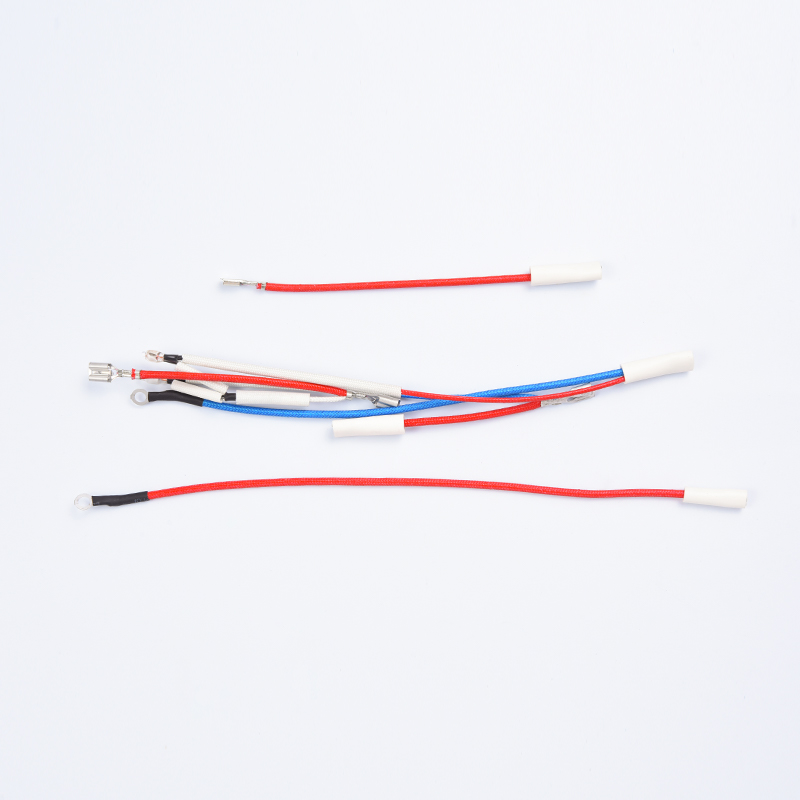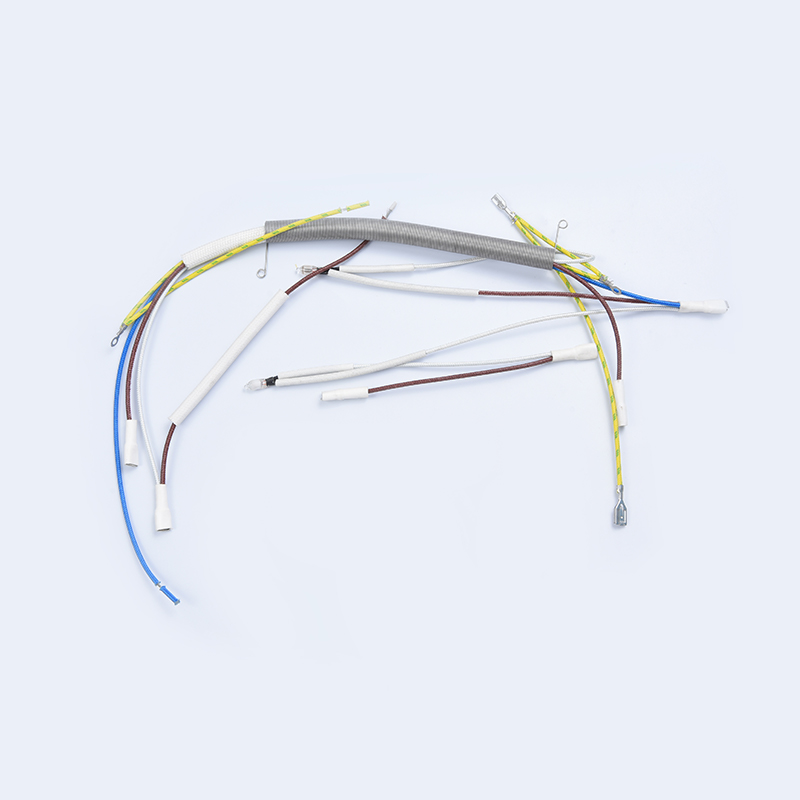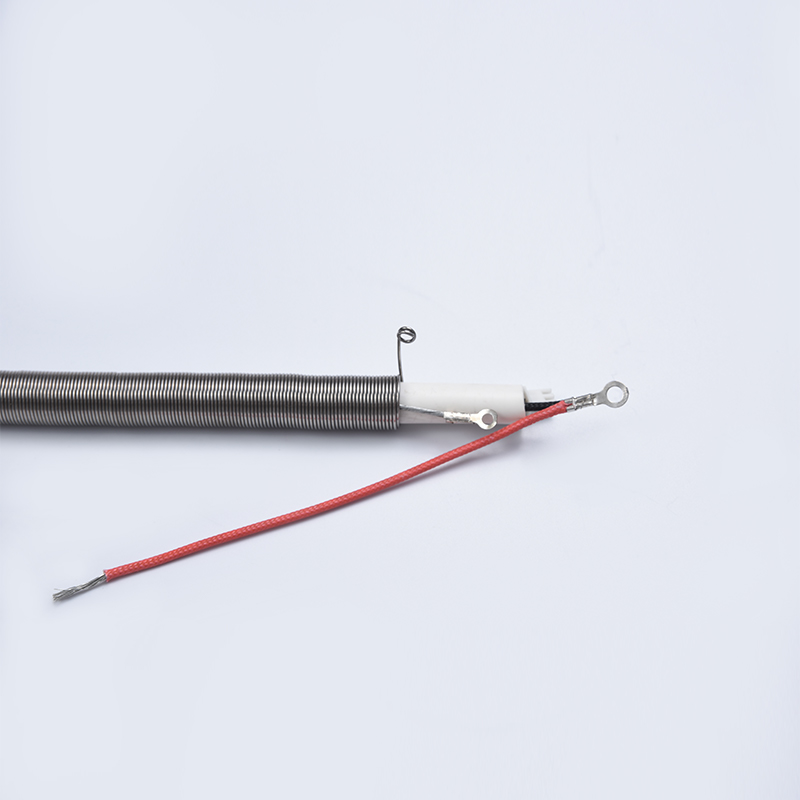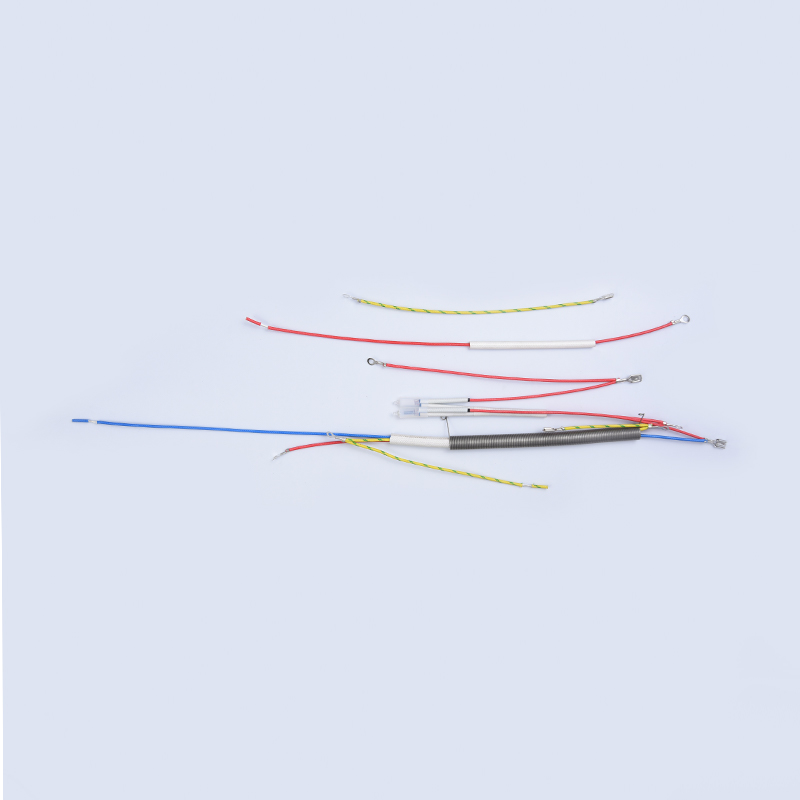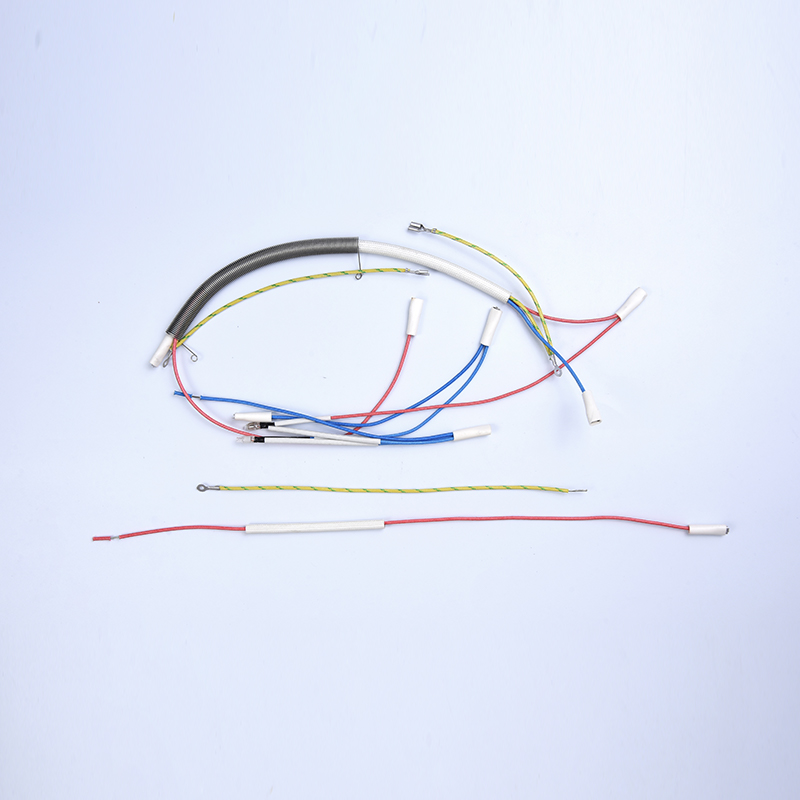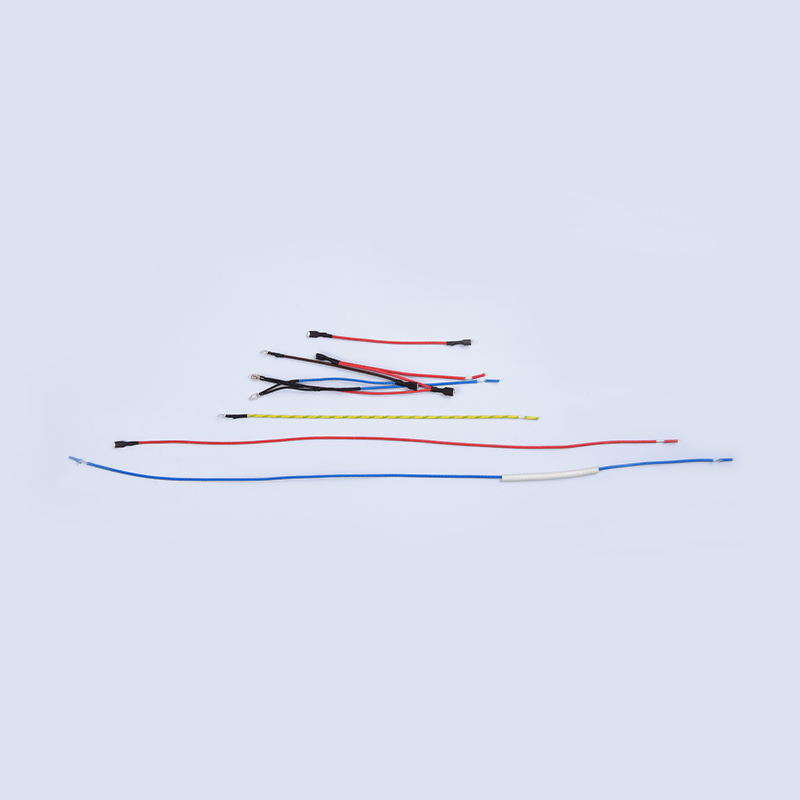+86-0574-63316601
Content
- 1 Introduction to Washing Machine Wiring Harnesses
- 1.1 What is a washing machine wiring harness?
- 1.2 What are the main uses of a washing machine wiring harness?
- 1.3 Why are washing machine wiring harnesses so important?
- 1.4 What are some common issues with washing machine wiring harnesses and how to prevent them?
- 1.5 How to determine the quality of a washing machine wiring harness?
- 2 Why do washing machine wiring harnesses need to be both durable and flexible in their design?
- 3 Understanding Washing Machine Wiring Harnesses: Structure, Function, and Wiring Configuration
- 4 Analysis of Common Symptoms of Washing Machine Wiring Harness Failures
- 5 How can I prevent future washing machine wiring harness problems?
Introduction to Washing Machine Wiring Harnesses
What is a washing machine wiring harness?
A washing machine wiring harness is the core electrical connection component within a washing machine, consisting of multiple wires, connectors, plugs, and protective covers. It not only reliably connects the power supply, control board, motor, sensors, and other key electrical components, but also ensures efficient transmission of current and signals within the system. Think of the wiring harness as the washing machine's internal "neural network," ensuring the coordinated operation of its various functional modules.
With the advancement of intelligent home appliances, the number of electrical components within washing machines has increased, and the wiring harness structure has become more complex. High-quality wiring harnesses ensure stable current flow and prevent signal interference, ensuring that washing machine programs execute precisely according to the programmed sequence. However, inferior wiring harnesses can easily cause machine failures and pose safety hazards such as short circuits and leakage, seriously impacting the user experience and family safety.
What are the main uses of a washing machine wiring harness?
A washing machine wiring harness performs the following key functions:
Power transmission: The washing machine wiring harness is responsible for stably transmitting power to key components such as the motor, heater, water pump, and control board, ensuring that each module receives continuous and reliable power during operation. Without a high-quality, stable wiring harness, the washing machine may fail to start or experience power fluctuations during operation, leading to interruptions or unstable operation. High-quality wiring harnesses, with precise cable specifications and excellent conductivity, ensure stable power supply under various load conditions, thus ensuring efficient operation and a long lifespan.
Signal Transmission: The wiring harness connects the control board with various sensors, providing real-time feedback on information such as water level, temperature, and speed. Through the precise signals transmitted by the wiring harness, the washing machine can automatically adjust its operating mode based on environmental changes, such as water volume control, heating temperature adjustment, and speed optimization, thus completing an intelligent washing cycle. High-quality wiring harnesses effectively prevent signal interference and electromagnetic noise, ensuring accurate data transmission and a stable and intelligent operating experience.
Safety Protection: High-quality wiring harnesses utilize superior insulation materials and scientifically designed protection to not only effectively prevent short circuits, leakage, and current fluctuations, but also protect the entire washing machine and the user in abnormal situations. They serve not only as a bridge for electrical connections but also as the "first line of defense" for safety. Through multi-layer insulation, high-temperature-resistant materials, and a strategic layout, the wiring harness remains secure and stable under high loads, long periods of operation, and complex environments, significantly reducing the risk of electrical failures and safety incidents.
Supporting Intelligent Functions: With the development of IoT technology, washing machine wiring harnesses not only transmit power and signals, but also handle intelligent data transmission, enabling the entire washing machine to interact with mobile apps, remote control systems, or smart home platforms. High-quality wiring harnesses support high-speed data transmission, ensuring the stable operation of intelligent functions such as remote monitoring of washing status, intelligent wash scheduling, and fault notifications. Reliable wiring harness transmission allows users to enjoy a more convenient and efficient intelligent operation experience, while also enhancing the added value and ease of use of the entire washing machine.
Why are washing machine wiring harnesses so important?
The importance of washing machine wiring harnesses is reflected in several aspects:
Overall Machine Performance Dependence: The overall performance of a washing machine depends heavily on the stability of the wiring harness. If the wiring harness has poor contact, breaks, or deterioration, it can cause the washing machine to fail to start properly, run abnormally, and even affect the operation of the motor and other key components. High-quality wiring harnesses ensure stable current and signal transmission, enabling the various washing machine modules to work together, ensuring smooth and efficient operation of the entire machine while reducing the risk of failures caused by electrical problems.
Safety Assurance: Poor-quality or damaged wiring harnesses can cause serious safety issues such as short circuits, overheating, and even fire or electric shock. High-quality wiring harnesses are made of high-temperature, wear-resistant, and age-resistant materials. Combined with a scientific layout design and strict production standards, they effectively prevent abnormal current flow or accidental contact, protecting users and their belongings. Furthermore, these wiring harnesses maintain excellent insulation properties over long periods of use, reducing the risk of accidents.
Service Life: The quality of the wiring harness directly impacts the lifespan of a washing machine. Durable, stable wiring harnesses can withstand long-term high-load operation, repeated bending, and current fluctuations, reducing the frequency of repairs and replacements. Using high-quality wiring harnesses reduces wear on components, extending the overall lifespan of the washing machine, saving maintenance costs and improving the user experience.
Intelligent Support: With the advancement of intelligent home appliances, washing machines require not only stable power transmission but also accurate data transmission and signals. High-quality wiring harnesses support intelligent control systems, remote monitoring, and data transmission, ensuring stable and reliable intelligent operation. For example, users can remotely check washing status, adjust wash programs, and receive fault notifications via a mobile app. High-quality wiring harnesses ensure these functions remain undisturbed during long-term use.
What are some common issues with washing machine wiring harnesses and how to prevent them?
During daily use, washing machine wiring harnesses may experience the following common problems:
Wear and breakage: Long-term use or frequent bending and pulling of the wiring harness can cause wear and even breakage of the outer insulation layer. This not only affects the stability of current transmission but can also expose the internal copper wires, increasing the risk of short circuits and leakage. Failure to properly protect the wiring during moving or installation can also accelerate wiring wear. Therefore, high-quality wiring harnesses are typically made of wear-resistant and stretch-resistant materials and equipped with flexible protective covers to extend their service life and enhance safety.
Poor contact: Weak contact between wiring harness terminals or corrosion from prolonged use can lead to unstable current transmission, affecting the normal operation of the washing machine. For example, problems such as slow motor startup, malfunctioning water pumps, and abnormal control board signals may all be caused by poor contact. To prevent these problems, high-quality wiring harnesses typically use tin- or nickel-plated terminals to enhance conductivity and corrosion resistance. This also ensures a tight fit during installation, improving long-term stability.
Aging: Long-term operation in high-temperature and high-humidity environments can cause the insulation material of washing machine wiring harnesses to gradually age, resulting in a decrease in withstand voltage and insulation performance. Aging wiring harnesses are not only prone to microcracks, but can also cause current leakage, short circuits, or even complete machine failure. High-quality wiring harnesses typically utilize heat-resistant, age-resistant insulation materials such as PVC, silicone, or modified polyolefins, and undergo long-term life testing to ensure stable performance over extended use.
Short circuits and leakage: When the outer layer of a wiring harness is damaged or poorly designed, internal wires may contact other metal components, causing short circuits or leakage. These issues can not only damage critical components but also pose a fire or electric shock hazard, seriously threatening user safety. High-quality wiring harnesses are scientifically designed and rigorously quality-controlled, featuring multi-layer insulation, protective tubing, and standardized connectors to minimize the risk of short circuits and leakage, ensuring reliable operation of the entire machine.
Preventative Measures:
Selecting high-quality wiring harnesses that are heat-resistant, abrasion-resistant, and corrosion-resistant is the first step to ensuring long-term, stable operation of your washing machine. High-quality wiring harnesses not only withstand prolonged exposure to high temperatures and humidity, but also resist the strain, abrasion, and chemical corrosion that can occur during daily use. This ensures stable current transmission and accurate signals, reduces failure rates, and extends the lifespan of the washing machine.
Proper Installation and Layout: When installing the wiring harness, avoid excessive pulling or bending, and keep the wiring neat and organized. A proper layout not only reduces wear caused by uneven stress on the wiring harness but also facilitates subsequent inspection and maintenance. Using retaining clips or cable ducts to secure the wiring harness effectively prevents damage from vibration and compression, improving the reliability of the wiring harness and the entire machine.
Regular Inspection and Maintenance: Regular inspection of the wiring harness is a crucial preventative measure. Users or maintenance personnel should monitor the wiring harness for signs of wear, aging, breakage, or poor contact, and promptly replace any aging or damaged components if any anomalies are detected. Regular maintenance significantly reduces the likelihood of unexpected failures and ensures the long-term safe and stable operation of the washing machine.
Select Products that Have Been Rigorously Tested: Using wiring harnesses that have undergone rigorous quality testing ensures stable performance under long-term, high-load operation. High-quality manufacturers conduct multiple tests on wiring harnesses, including voltage withstand tests, flex life tests, and insulation resistance tests, to ensure each harness meets safety standards and performance requirements, providing reliable protection for the entire appliance while also enhancing user experience and safety.
How to determine the quality of a washing machine wiring harness?
The following aspects can be used to assess wiring harness quality:
Material Selection: High-quality washing machine wiring harnesses are typically made of high-grade materials that are resistant to heat, abrasion, and corrosion, such as modified polyolefins, PVC, or silicone. These materials can not only withstand prolonged exposure to high temperatures and humidity, but also resist the pull, friction, and chemical corrosion of daily use. This ensures that the wiring harness maintains excellent electrical performance and mechanical strength over time, enhancing overall appliance reliability.
Insulation Performance: The insulation layer of the wiring harness should be intact and undamaged, with excellent electrical insulation properties. This not only prevents current leakage, short circuits, and electrical leakage, but also effectively isolates signal interference between different circuits. High-quality wiring harnesses utilize multi-layer insulation design and rigorous material selection to ensure stable insulation performance even in high-temperature, humid, and vibrating environments, providing reliable protection for appliance operation and user safety. Welding and Connectors: The wiring harness's welding process and connector design directly impact the stability of current and signal transmission. High-quality wiring harnesses utilize robust welding techniques and feature scientifically designed terminals and plugs to ensure tight electrical contact and excellent conductivity. Even under prolonged vibration or high-load conditions, the wiring harness maintains a stable connection, preventing device failures caused by poor contact.
Testing Standards: High-quality wiring harnesses undergo multiple rigorous tests before shipment, including withstand voltage testing, flex life testing, and insulation resistance testing. These tests ensure that the wiring harnesses meet international performance standards and remain stable and reliable under long-term, high-load use. Through rigorous testing, manufacturers can effectively reduce failure rates and provide users with safe, durable, and reliable products.
Why do washing machine wiring harnesses need to be both durable and flexible in their design?
Washing machine wiring harnesses not only transmit power and signals but also need to maintain reliability and safety over long periods of use. Therefore, their design must balance durability and flexibility. The reasons are as follows:
Durability ensures long-term use:
During washing machine operation, the high-speed rotation of the motor, the vibration of the drum, and the high temperatures generated by the heating element all place long-term stress on the wiring harness. High-quality wiring harnesses are made of heat-resistant, abrasion-resistant, and aging-resistant materials, such as multi-stranded copper wire and a heat-resistant PVC or polyurethane outer jacket. They can withstand repeated bending and mechanical friction while maintaining excellent insulation and conductivity. This not only reduces the occurrence of washing machine electrical problems but also significantly extends the life of the machine, eliminating the need for frequent washing machine repairs.
Flexibility facilitates installation and maintenance:
Washing machine interiors are limited, and wiring harnesses must be bent, folded, and routed within tight spaces while protecting the conductors and terminals. A flexible wiring harness design can adapt to various installation positions without compromising electrical performance, making repairs and component replacements more convenient and reducing operational risks for maintenance personnel. Furthermore, highly flexible wiring harnesses can better adapt to future upgrades or retrofits to different washing machine models.
Reducing the risk of failure:
Improper wiring harness materials or design can lead to wear, breakage, or poor contact, causing malfunctions. By integrating durability and flexibility into the design, the risk of wire wear, loose terminals, and insulation damage can be significantly reduced, thereby reducing electrical problems encountered by users during washing machine troubleshooting. This also reduces machine downtime and repair costs caused by wiring harness issues.
Supporting intelligent and multifunctional washing machines:
In addition to traditional power transmission, modern smart washing machines also require wiring harnesses for high-speed data transmission to connect sensors, control boards, and remote monitoring modules. Designed with both durability and flexibility, the wiring harnesses ensure stable data transmission despite repeated bending and vibration, ensuring reliable automation, remote control, and multifunctional operation of smart washing machines. This not only improves washing machine maintenance efficiency but also provides a more convenient and intelligent user experience.
Understanding Washing Machine Wiring Harnesses: Structure, Function, and Wiring Configuration
A washing machine wiring harness is a core component of a washing machine's internal electrical system. It reliably connects the power supply, control board, motor, sensors, and other key components, ensuring safe, stable, and intelligent operation of the entire machine. With the continuous advancement of home appliance technology, wiring harness design and functionality have become increasingly complex, and wiring harness configurations vary slightly between different washing machine models. Below, we'll detail the components, functions, and common wiring configurations of washing machine wiring harnesses.
Typical Components of a Washing Machine Wiring Harness
A washing machine wiring harness typically consists of the following main components:
Wires: Wires are the foundation of a washing machine wiring harness and serve as the core channel for power and signal transmission. Wire specifications, cross-sectional area, and material vary depending on the intended use. The main power cord typically uses multi-strand copper wire and is treated to withstand high temperatures and abrasion to withstand long periods of operation and high current loads. Signal cables are typically thin conductors used to transmit sensor data and control signals, requiring excellent insulation to prevent signal interference. High-quality wires are also equipped with flexible sheaths to enhance stretch and bend resistance, ensuring long-term stable operation and safe use of the entire machine.
Connectors: Connectors bridge the gap between the wiring harness and the various electrical modules within the washing machine, including key components such as the control board, motor, and water pump. High-quality connectors are scientifically designed to ensure secure installation and prevent poor contact caused by vibration or prolonged use. High-quality connectors typically utilize corrosion-resistant materials and a tight-contact structure. They also offer dust and moisture resistance, ensuring stable power and signal transmission even in humid or high-temperature environments, enhancing overall reliability and service life.
Terminals: Terminals serve as the interface between wires and electrical components, providing both electrical conductivity and securement. High-quality terminals are typically tin- or nickel-plated for excellent conductivity and corrosion resistance, and can withstand long-term high-temperature, humid, and vibration environments. High-quality terminals are also designed with different types and sizes for different modules to ensure a tight installation and prevent system failure or signal loss due to looseness or poor contact, thereby ensuring safe and stable operation of the washing machine.
|
HarnessComponent |
FunctionDescription |
TypicalApplication |
|
Power Wires |
Provide stable power to the washing machine motor, heating element, pump, and control board |
Fully-automatic, semi-automatic, and smart washing machines |
|
Motor Control Wires |
Transmit start, speed, and direction signals from the control board to control motor operation |
Fully-automatic and smart washing machines |
|
Sensor Wires |
Transmit detection data such as water level, temperature, and rotation speed to the control board for automatic adjustment |
Smart washing machines and some fully-automatic models |
|
Ground Wires |
Provide safe grounding to prevent electric leakage or short circuits |
All washing machine models |
|
Connectors |
Reliably connect wires to the control board, motor, pump, and other modules, preventing poor contact |
All models |
|
Terminals |
Interface between wires and electrical components, ensuring conductivity and secure connection |
All models |
|
Insulation & Sheathing |
Protect wires from wear, high temperature, and corrosion, ensuring safe and stable operation |
All models |
|
Clips & Fasteners |
Secure harness position to prevent damage from vibration or friction |
All models |
Function of Each Wire in the Wiring Harness
Each wire in a washing machine's wiring harness has a clearly defined function, primarily encompassing the following categories:
Motor Control Wire: This wire is one of the key functional wires in the washing machine's wiring harness. It connects the control board to the motor, reliably transmitting control signals to the motor for start/stop, speed adjustment, and rotation direction control. High-quality motor control wires are made of high-temperature and wear-resistant materials, ensuring stable conductivity even under prolonged, high-load operation. Their stability is directly related to the washing machine's operating efficiency, speed accuracy, and wash results. Any signal interference or poor contact can cause abnormal motor operation or overall performance degradation.
Sensor Signal Wire: This wire connects key components such as the water level sensor, temperature sensor, and speed sensor, transmitting measured data to the control board in real time. This type of wiring harness requires high insulation and excellent anti-interference capabilities to ensure accurate sensor signals. High-quality signal wires not only ensure that the intelligent program can precisely adjust its operating state based on parameters such as water level, temperature, and speed, but also prevent washing anomalies caused by signal loss or miscommunication, ensuring reliable intelligent operation and a superior user experience. Ground and protective wires: Ground and protective wires are crucial for electrical safety, preventing leakage, short circuits, and abnormal current flow, while also providing a stable electrical reference point for the entire washing machine. High-quality ground and protective wires are made of high-voltage, corrosion-resistant materials to ensure effective conductivity even under long-term use or in high-humidity environments. A properly laid out ground wire not only protects user safety but also prevents damage to electrical components, enhancing the reliability and lifespan of the entire washing machine. They are an essential component of the washing machine's electrical system.
Common Wiring Configurations for Different Washing Machine Models
The wiring harness layouts for different washing machine brands and models vary slightly, but generally follow the following guidelines:
Fully automatic drum washing machines: The wiring harness design for fully automatic drum washing machines is relatively complex, requiring the transmission of multiple electrical functions. It typically includes power cables, heater control cables, blower motor cables, pump control cables, and multiple sensor signal cables, such as water level, temperature, and speed sensors. To facilitate installation and maintenance, these wiring harnesses often adopt a modular design, allowing each module to be independently removed and replaced. Furthermore, high-quality wiring harnesses utilize high-temperature and wear-resistant materials, and a well-designed wiring layout ensures that wiring is less susceptible to wear and loosening during long-term operation, thereby enhancing the stability and lifespan of the entire machine.
Semi-automatic washing machines: The wiring harness structure for semi-automatic washing machines is relatively simple, primarily consisting of power cables, motor control cables, and some sensor cables. Most wiring is fixed near the control panel, making installation, operation, and maintenance easy. Despite its simple structure, a high-quality wiring harness must possess excellent conductivity, insulation, and wear resistance to ensure stable current transmission and prevent startup failures or malfunctions due to aging or poor contact. For semi-automatic washing machines used over a long period of time, a stable and reliable wiring harness is also crucial for ensuring overall performance.
Smart washing machines: The wiring harness design for smart washing machines must not only meet traditional power and control functions but also accommodate high-speed data transmission for intelligent control and remote monitoring signal transmission. These harnesses typically incorporate shielding to prevent electromagnetic interference and ensure accurate and stable data transmission. Furthermore, high-quality smart wiring harnesses, constructed from wear- and heat-resistant materials, are engineered to withstand prolonged operation and frequent bending, ensuring reliable operation of intelligent control functions in a variety of environments and providing users with a stable remote monitoring, app-based operation, and intelligent washing experience.
Analysis of Common Symptoms of Washing Machine Wiring Harness Failures
As a core component of the entire washing machine's electrical system, the stability of the washing machine's wiring harness directly impacts its proper operation. A wiring harness failure can cause the machine to fail to start, program abnormalities, or even pose a safety hazard. Below, we've detailed the common symptoms of wiring harness failures to help users identify and address the problem promptly.
Washing Machine Failure to Start:
This is one of the most direct and common manifestations of wiring harness failure. If the power or control wires are broken, poorly connected, or short-circuited, the washing machine may not start at all. In this case, users will typically notice no response after pressing the start button. In this case, check the power cord, control board connectors, and main wiring harness for damage or looseness.
Intermittent Operation or Unexpected Shutdowns:
Poor wiring or aging wires in the wiring harness can cause the washing machine to stop intermittently or shut down unexpectedly. For example, the washing machine may suddenly stop during the wash or spin cycle and then resume operation on its own. This is usually caused by loose contact, a break, or a short-circuit in the motor control wires or sensor signal wires. Carefully inspect all wiring connections and terminals.
Modern washing machines are equipped with intelligent control systems. When a wiring harness malfunction occurs, the control panel may display a specific error code, such as a water level sensor failure, abnormal heating, or motor overload. This error code indicates a potential wiring harness problem. Users can quickly locate the cause of the problem by checking the corresponding wiring for disconnections, deterioration, or poor contact according to the manual or manufacturer's instructions.
Specific component malfunctions:
Wiring harness problems can also cause some washing machine functions to malfunction. For example, a pump may not drain, a motor may not rotate, the water inlet valve may not open, or the heater coil may not heat. These problems typically indicate a problem with the control or power wiring for the corresponding function, such as a break, deterioration, or loose solder joints. Checking the wiring harness connections for the faulty component is an effective way to quickly resolve the problem.
Burning odor or visible wire damage:
Serious wiring harness problems can cause a short circuit or overheating, melting the wire insulation, emitting a burning odor, and even visible damage to the wires. Such problems pose a safety hazard and could result in fire or electric shock. If you notice a burning odor or signs of melting, discoloration, or cracking on the wiring harness, you should immediately disconnect the power cord and contact a qualified technician for repair or wiring harness replacement. Do not continue to use the washing machine.
Washing machine wiring harness failures can manifest in a variety of ways, ranging from the entire machine failing to start, intermittent operation, to specific component failures or a burning odor. These could all signal wiring harness issues. By understanding these common symptoms, users can identify potential faults promptly and take measures such as inspecting or replacing high-quality wiring harnesses, thereby ensuring stable operation and safe use of the washing machine.
How can I prevent future washing machine wiring harness problems?
The washing machine wiring harness is a core component of the entire washing machine's electrical system. Its long-term stability directly impacts the machine's operating efficiency and safety. To reduce problems caused by aging or damage to the wiring harness, users can take the following preventative measures during daily use, thereby reducing the frequency of washing machine and wiring harness repairs.
Proper Washing Machine Maintenance Techniques
Regular washing machine maintenance is crucial for preventing electrical problems and extending the life of the washing machine. The following details several aspects:
Cleaning the filter: Washing machine filters easily accumulate hair, fibers, and debris. If left uncleaned, they increase the load on the motor and cause current fluctuations, which can affect the washing machine wiring harness and the entire electrical system. Regularly cleaning the filter ensures smooth water flow and reduces the chance of electrical problems.
Checking the drain line: Clogged or leaking drain lines can allow moisture to penetrate the wiring harness and electrical components, causing short circuits or corrosion. Regularly inspecting and cleaning the drain line not only helps prevent washing machine electrical problems but also protects the proper functioning of the pump and other electrical components.
Wipe the control panel and casing: Dust and moisture accumulated on the control panel and casing over time increase the risk of wiring aging and short circuits. Regularly wiping with a clean, dry, soft cloth can reduce dust buildup on the washing machine's wiring harness, keep the wiring clean, and improve overall machine stability.
Check the power cord and plug: Regularly inspect the power cord, plug, and ground wire for wear, looseness, or damage. Promptly identifying and addressing any issues can effectively prevent electrical problems caused by wiring aging or poor contact, ensuring safe use.
Avoid prolonged idling: Prolonged idling or frequent short-term starts of the washing machine place additional stress on the motor and wiring harness. Properly arranging wash cycles and loads can save energy and reduce the frequency of wiring-related problems during washing machine troubleshooting.
Avoid overloading the washing machine: Overloading is a major cause of washing machine wiring harness failures. The following tips can help users effectively avoid overloading:
Adhere to the manufacturer's recommended load: Each washing machine will indicate its maximum capacity in its manual. Exceeding the recommended capacity increases the motor load, placing greater current stress on the power and control cables, potentially causing wiring harness overheating or degradation. Following manufacturer recommendations can reduce the risk of wiring harness issues during washing machine troubleshooting.
Appropriately sort clothing: Avoid mixing heavy items (such as down jackets and carpets) with lightweight items. Heavy items increase motor load and can cause wiring harness and motor control cable anomalies. Proper sorting reduces the risk of electrical failures and extends the life of the washing machine wiring harness.
Avoid frequent, short-duration operation: Repeated high-load operation or repeated restarts within a short period of time can increase wiring harness current fluctuations, increasing the risk of wear and degradation. Properly scheduling wash cycles with appropriate intervals to allow the motor and wiring adequate rest can help reduce the frequency of washing machine troubleshooting.
Evenly distribute clothing: Uneven distribution of clothing in the drum can cause unbalanced operation, generating vibration and additional mechanical stress. This vibration can affect wiring harness retention, increasing wear and the risk of poor contact. Ensuring even distribution of clothing protects the washing machine wiring harness and reduces the risk of electrical failures. Regularly check the wiring harness: Even if the machine is not overloaded, it's recommended to regularly inspect the wiring harness for wear, deterioration, or poor contact. Preventive inspections can identify potential problems early, reducing the need for washing machine troubleshooting and repairs.
Promptly inspect and resolve water leaks
Water leaks are a common cause of damage to the washing machine wiring harness, potentially leading to short circuits, corrosion, and insulation failure. To effectively prevent electrical problems caused by water leaks, users can take the following measures:
Regularly inspect water pipe connections: Check the inlet and outlet pipe connections for looseness or deterioration, and ensure the seals are intact. Loose or damaged connections can easily leak water, potentially entering the wiring harness or control panel, increasing the risk of a washing machine repair.
Inspect the inner drum and drum area: Deterioration or cracking of the rubber seal between the inner drum and the outer casing can also cause water leaks. Regularly inspecting the rubber seals and promptly replacing worn parts will prevent moisture from reaching the washing machine wiring harness and protect the electrical system. Clean the drain pipe and filter: A clogged drain pipe or water accumulation in the filter can cause water backflow or leakage, potentially affecting the wiring harness and motor control circuits. Keeping the drain pipe clear and the filter clean ensures smooth drainage and reduces the need for washing machine repairs.
Promptly address water leaks: If you notice a leak, immediately stop the washing machine, drain any remaining water, and turn off the water supply. Do not continue to use the faulty washing machine to prevent moisture from entering the electrical wiring, causing a short circuit or burning the wiring harness. Prompt repairs can protect the long-term stability of the washing machine wiring harness.
Use waterproof protection measures: For water-sensitive wiring harness sections, consider using waterproof sleeves or adding wiring anchors to prevent moisture from reaching critical wiring. This further reduces the incidence of washing machine electrical problems and improves overall machine reliability.
Protect the washing machine from pests and rodents
Small animals chewing on the washing machine wiring harness is a common cause of accidental damage in the home, potentially causing electrical shorts or even complete machine failure. For effective protection, consider the following:
Keep the washing machine in a dry, ventilated, and clean environment: avoiding moisture and debris. Moisture and clutter attract rodents and insects, increasing the risk of wiring harnesses being gnawed or contaminated, thus reducing the frequency of wiring harness repairs.
Inspect the wiring harness for signs of animal activity: Regularly inspect the wiring harnesses around and inside the washing machine for signs of rodent gnaws, rodent droppings, or insect nests. If any abnormalities are found, immediately remove the pests to prevent further damage and minimize electrical problems in the washing machine.
Use protective sleeves or protective devices: Protective sleeves or plastic tubing can be added to critical wiring harnesses to provide a physical barrier, making it more difficult for small animals to gnaw. This physical isolation can significantly reduce the need for wiring harness repairs and protect the long-term stability of the electrical wiring.
Seal gaps around the washing machine: Inspect the area around the washing machine for gaps that small animals can easily enter, such as wall cracks or underpinnings. If necessary, seal or install protective panels to prevent rodents from accessing the wiring harnesses, minimizing potential electrical problems in the washing machine.
Regular maintenance and cleaning: Even after taking protective measures, it's recommended to regularly clean the underside and surrounding areas of your washing machine to prevent the accumulation of dust and debris that attract pests. This regular maintenance reduces the risk of damage to the washing machine's wiring harness and extends the life of the machine.




 中文简体
中文简体